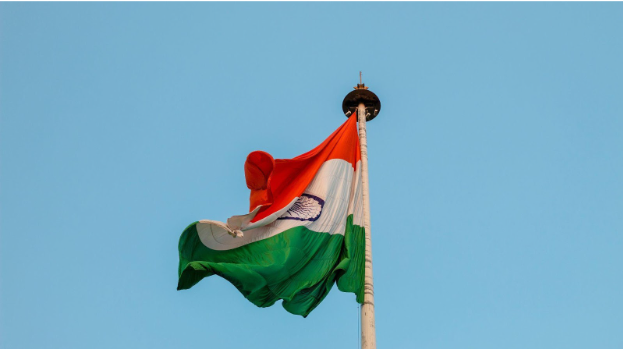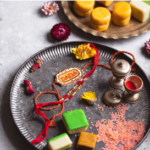Free India was born on August 15, 1947. To immortalize the sacrifice of the martyrs and a day to honor our veterans, 15th August is celebrated in India as Independence day with great pomp. It’s a day to celebrate our independence from onerous British rule. India is celebrating its 75th year of Independence on 15th August 2022.

The freedom we enjoy today is the price of the sacrifice of many lives, including the freedom fighters for the freedom of our motherland. When the tricolor flag is hoisted all over the country, irrespective of all the differences, every Indian reaches the pinnacle of pride.
Jawaharlal Nehru, the first prime minister of independent India, delivered a speech on 14th August 1947 at midnight in the durbar hall of Parliament entitled ‘Tryst with Destiny’ which has been written in golden
letters in world history as the most remarkable declaration of Independence. In Nehru’s words, India awakens to new life and freedom while the rest of the world sleeps. Since then, the nation eagerly watched the Prime Minister’s speech. After hoisting the national flag at Red Fort in Delhi on August 15, the Prime Minister will address the nation and deliver the Independence Day speech. Brave freedom fighters will be recollected in his speech.
This article recalls some of the important freedom fighters and their sacrifices. Read further to take a trip down your memory lane and remember why we celebrate independence today. Let’s repay them with respect for their service and sacrifice.
7 freedom fighters you should know about
Bagha Jatin Mukherjee (1879-1915)
Jatin was born in Karyagram, a village in present-day Bangladesh. His parents were Umeshchandra Mukherjee and Sharatshashi. From childhood, he was famous for his physical bravery and great strength. After passing the entrance examination in 1895, he joined Calcutta Central College and was very impressed by Swami Vivekananda.
Bagha Jatin Mukherjee was a revolutionary freedom fighter. His real name was Jatin Nath Banerjee. He came to be called ‘Bagha Jatin’ after killing a tiger without any arms. He worked as a stenographer under the government of Bengal. He was also a person of self-respect and national pride. In 1908 Jatin, with some revolutionaries, was arrested for the Alipore Conspiracy case. However, he was left free because of the lack of evidence. Later, he went to the Howrah- Shibpur area. He continued underground works with other revolutionaries.
Jatin was second arrested in the Howrah-Shibpur Conspiracy case. Those who were arrested came to be known as ‘Jatin’s gang.’ Due to the case, he was dismissed from the service. As he was in jail, he had made a few plans and his mind. He thought that they could capture power through armed rebellion. Though all the preparations were in progress, they could not be made practical. Police found their hiding place of Jatin in a paddy field. There was a heavy exchange of fire. Later, police found Jatin dead with two others injured.
Bipin Chandra Pal (1858- 1932)
Bipin Chandra Pal was born on 7 November 1858 in a rich family in Bengal. His participation in Brahmo Samaj at an early age showed how interested he was in social work. He worked for female education and the equality of castes.
In 1886, Bipin Chandra Pal joined the Indian National Congress. At that time, he accepted the leadership of the ‘moderates.’ But later, he joined the extremists. He joined hands with two other leaders to fight for freedom differently. Those two leaders were Lala Lajpat Rai and Bal Gangadhar Tilak. They were the
extremists in congress. They followed several methods to show that they didn’t want the British Government.
Pal started the newspaper Bande Mataram in 1906, and Aurobindo Ghosh edited it. In 1911, he also started a monthly titled Hindu Review. He also edited the Independent, founded by Motilal Nehru.
But above all, he is remembered as a member of the team called ‘Lal Bal Pal.’ These leaders started the first popular upsurge against British Colonial policy in the 1905 partition of Bengal. This was before Mahatma Gandhi entered the fray of Indian politics. Not very happy with the policy of non-violence, he openly criticized Gandhiji.
Vijayalakshmi Pandit (1900-1991)
Vijayalakshmi Pandit was one of the world’s leading women in public life in the 20th century. She was the daughter of Motilal Nehru and the sister of Jawaharlal Nehru. She was educated in India and abroad. She was married to Sitaram Pandit, who was also a congress worker.
Just like the other family members, she also became a freedom fighter. The British authorities in India imprisoned her three times. She was elected to the municipal government in Allahabad. She was also elected to the legislative assembly of the United provinces. There she became minister for local self-government and public health.
After the Independence of India, she entered into diplomatic services. She was the ambassador of India to various countries like the Soviet Union, Ireland, the United States, and Mexico. From 1962 to 1964, she served as the governor of Maharashtra. Thereafter she was elected to the Lok Sabha from Phulpur, the former constituency of Jawaharlal Nehru.
On the evening of her life, she completely retired from public Life. She had an interest in writing. Her works are The Evolution of India (1958) and The Scope of Happiness: A Personal Memoir (1979). Vijayalakshmi Pandit died in 1991.

Zakir Husain (1897- 1969)
Zakir Husain was the third president of India. Before that, he also was the vice president. He was born in Hyderabad. Zakir was educated at Islamic schools and the Muslim Anglo-Oriental College in Aligarh. He acquired a doctorate in Economics from Berlin University in Germany. He was very much interested in the freedom struggle of India. He was attracted to politics by the Non-cooperation movement.
Dr. Zakir Husain was an outstanding scholar. He has made many contributions to popularizing the Gandhian mode of basic national education. He had received academic honors from various Indian universities. It was Zakir Husain who translated Plato’s ‘Republic’ into Urdu. Zakir Husain was a member of the first Indian Universities Commission. From 1956 to 1958, he was the Executive Board member of UNESCO.
Lakshmi Bai (1835-1858)
Rani Lakshmi Bai was a famous freedom fighter. She was the symbol of courage and determination of women. More popularly, she is known as ‘Rani of Jhansi’. She is presented as a heroine in the history of India. She was an orphan and was brought up in the household of Peshwa, Baji Rao II. She was married to the prince of Jhansi. She studied martial arts with her male friends. Her husband died in 1843 and she had no children. Rani Lakshmi Bai became the Regent of Jhansi. He rode the state on behalf of her adopted son, who was just 5 years old. However, Lord Dalhousie declared that Jhansi was part of the British Empire. It was due to a strange policy of the British government. It was held that when there was no successor to a ruler, the state would be joined to the British Empire. Due to this policy, many kingdoms became part of the British Empire, and the Kings were irritated.
Many princes were troubled by the British. She joined hands with them to fight a common enemy- the British East India Company. Nana Sahib was her main supporter. He was her old companion in the Peshwa’s household. In history, it is known as the Great Uprising. It was arranged in connection with the First Independence War of 1857. She led from the front. Every Indian remembers her fight on a horseback. However, she died on June 16, 1858, during the battle.
Feroze Gandhi (1912-1960)
Feroze Gandhi Boss katana list who also became a powerful freedom fighter. He belongs to the Parsi community. He was the husband of Indira Gandhi, the daughter of Jawaharlal Nehru. He studied at the City Anglo-Vernacular High School and Ewing Christian College. He gave up his studies in 1930 to join the Struggle for Indian independence. Feroze was close to the Nehru family, especially Indira’s mother, Kamala Nehru, and Indira herself.
Indira and Feroze grew closer to each other in England. They married in 1942. He was arrested and jailed during the Quit India Movement. He was imprisoned for one year in Allahabad’s Naini Central Prison. Indira was also imprisoned. In 1944, she gave birth to Rajiv Gandhi, Prime Minister candidate for the Congress party. In 1946, Sanjay Gandhi was born, who was a major political influence on his mother when she was PM. Feroze Gandhi became the editor of The National Herald, a newspaper founded by Jawaharlal Nehru. Feroze Gandhi became an MP in 1952.
Annie Besant ( 1847-1933)
Dr. Annie Besant was born to Irish parents in London on October 1, 1847. From 1893 onwards, India was her home. She is one of the foreigners who inspired patriotism among Indians. She said in 1918, “I love the Indian people as I love none other, and… and my heart and mind… have long been laid on the altar of the motherland.” She got separated from her husband in 1873. A woman of interest and oratory, she became a member of the Fabian Society and Theosophical Society. In 1907, she was elected President of this organization.
She founded the Home Rule league in 1917. The purpose behind it was to gain the freedom of the country and revive the country’s cultural heritage. In 1914, she attended the session of the Indian National Congress and presided over it in 1917. She could not understand the meaning of the Satyagraha movement. As a result, she withdrew from the Home Rule league in opposition to Mahatma Gandhi’s leadership. She identified the talent in young men and women. Her inspiration brought up many leaders. The world-famous philosopher K. Krishnamurthy is one of them. She spent most of her remaining years in India. She died in Madras in 1933 after campaigning for Home Rule.

As India celebrates its 75th independence year, let’s commemorate all who shaped India’s freedom struggle. And let it remain ingrained in the collective unconscious of this country.
11-08-2022






